Digitalization Technologies Offer Efficiency, Scalability, and Visibility in Industrial Environments
Connected technologies can bring significant benefits to OEMs, but companies need to carefully evaluate their goals and their existing resources in order to adopt successful digitalization strategies.
The digitalization of production systems can help OEMs create more efficient supply chains, stronger production processes, and better tracking solutions for supply chains, inventory, and finished goods. When mechanical and plant engineering companies consider implementing IIoT protocols to achieve these goals, they may have concerns that digitalization technologies could bring about disruptive changes in existing business models. However, disruption may be essential to achieving new growth, higher levels of quality, and greater customer service. The realities of a competitive marketplace leave many OEMs no other option but to embrace the positive disruption that emerging digitalization technologies and connected industrial systems can bring to their business.
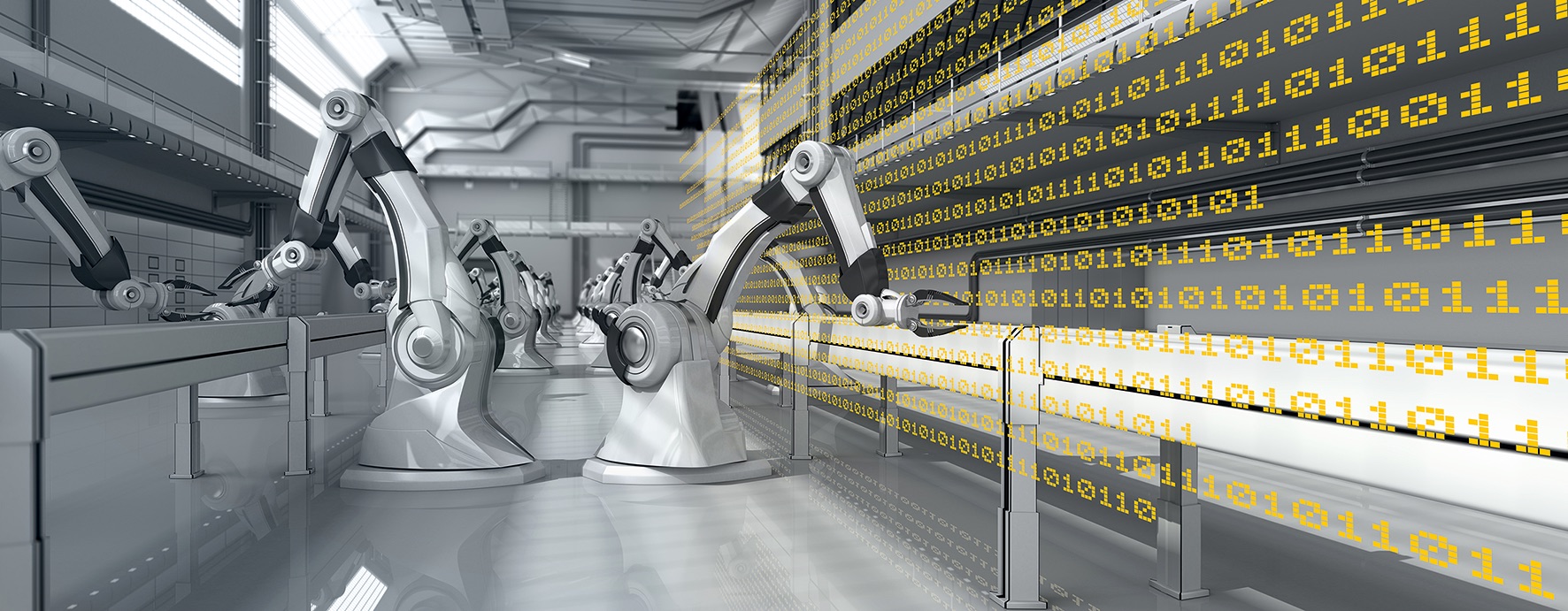
As companies move towards implementing IIoT solutions, it is important to take a strategic series of steps to achieve successful digitalization with minimal disruption.
First, let’s look at the players in this industry.
Original equipment manufacturers (OEMs) provide individual machine modules or complex production machines and systems. This equipment has high functionality and can often be expanded to include digital IIoT components and services.
Suppliers of automation components provide specialized digitalized systems including programmable logical controllers (PLC), computer numerical control (CNC) software, industrial PCs, human machine interface (HMI) software, drive systems, measurement technology, and sensors that use digital signals and controller-based systems to directly control machines and processes.
Software providers for production control at the factory/enterprise level provide enterprise resource planning (ERP), manufacturing execution system (MES), and similar management software systems used to control business processes and handle large data volumes. However, they rarely have direct access to machine- and process-related data.
Platform providers for new business models are still poorly represented in the capital goods sector, although there are well-known names in the business-to consumer sector (e.g., Amazon). These platform providers offer subscription models (e.g., pay per use, pay per month, pay per unit) and may establish themselves in the market with benefits and service-oriented models that serve OEMs.
Hardware suppliers that specialize in the digitalization of industrial processes, including the HARTING Technology Group, provide advanced hardware solutions for all of the connected systems and interfaces that are essential in control, drive, HMI, and communication technologies for production systems.
Associations and cooperations for digitalization and IIoT create strategic alliances between mechanical engineering and software companies and frequently pursue the goal of creating an open, manufacturer-neutral IIoT environment and corresponding standards based on software and communication technologies.
Users/operators of machines and plants hold the greatest expertise in production machines and associated plant technologies. They stand to see the greatest potential impact and change due to digitalization.
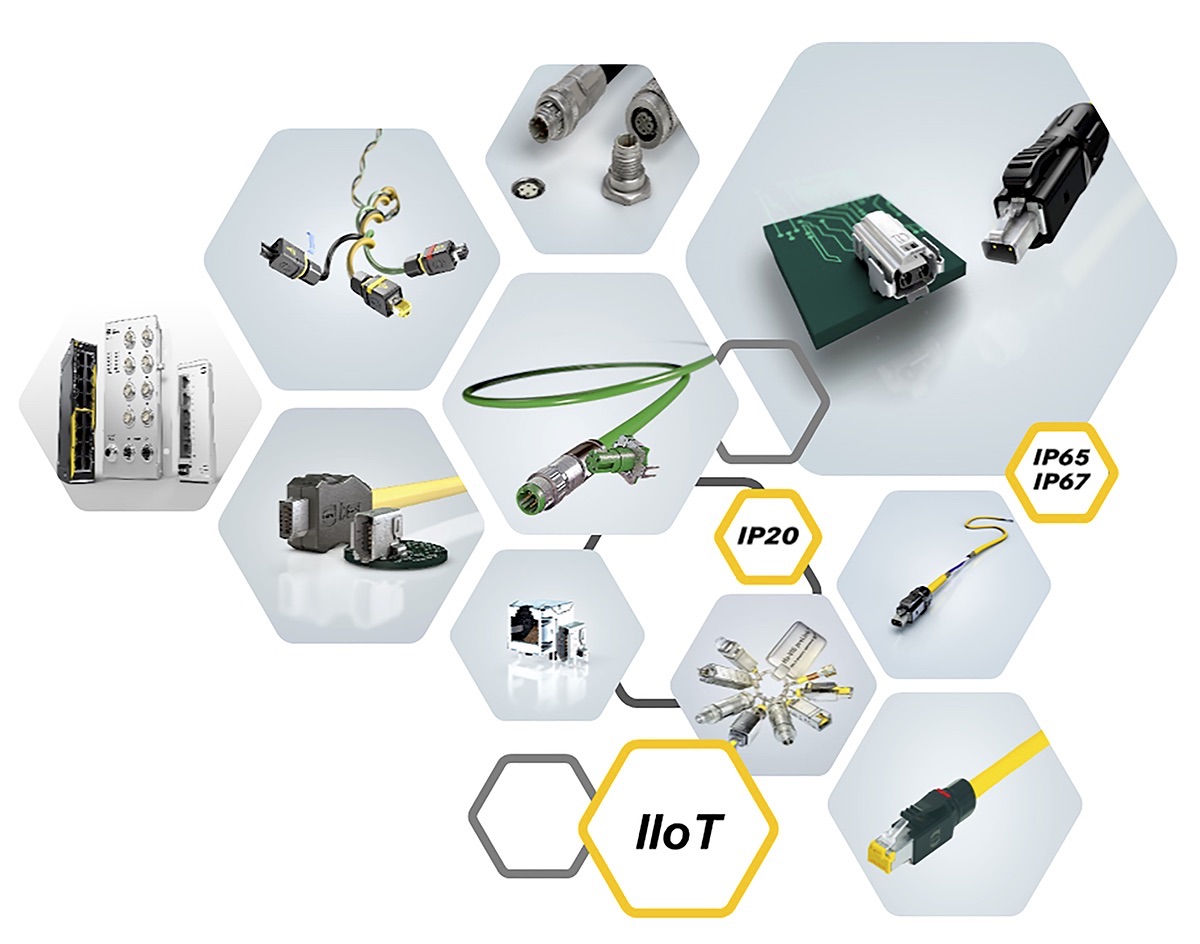
HARTING’s Ethernet interfaces form the foundation of connected industrial systems. High-speed connectivity, combined with modularity and scalability, creates powerful, adaptable ways for OEMs to plan, gather data, and streamline operations.
Next, let’s identify the key trends impacting the digitalization world.
Industry 4.0, or the fourth industrial revolution, utilizes interconnectivity, automation, machine learning, and real-time data to improve manufacturing and supply chain management.
IIoT is the Industrial Internet of Things, a concept that makes connections between people, data, and machines as they work together to achieve manufacturing goals.
Scalability enables production plants to increase or decrease activities and output as needed using existing systems in an efficient manner.
Smart Maintenance: Declining margins on new installations, combined with high end-user expectations for maintenance and service, make the expansion of life-cycle-cost-based business models with new business concepts — including maintenance, service, retrofit services, such as predictive maintenance — more economical for OEMs.
Interoperability of machine modules and subsystems enables machines and machine modules from different suppliers to easily join together in a single production line.
Modularization in industrial machines means that the respective hardware and development environment is designed for each machine’s concrete application according to the principle of “only as much as necessary.” However, if necessary, these can also be designed for easy upgrades and expansion, particularly in the data interfaces, to facilitate the growth of control software.
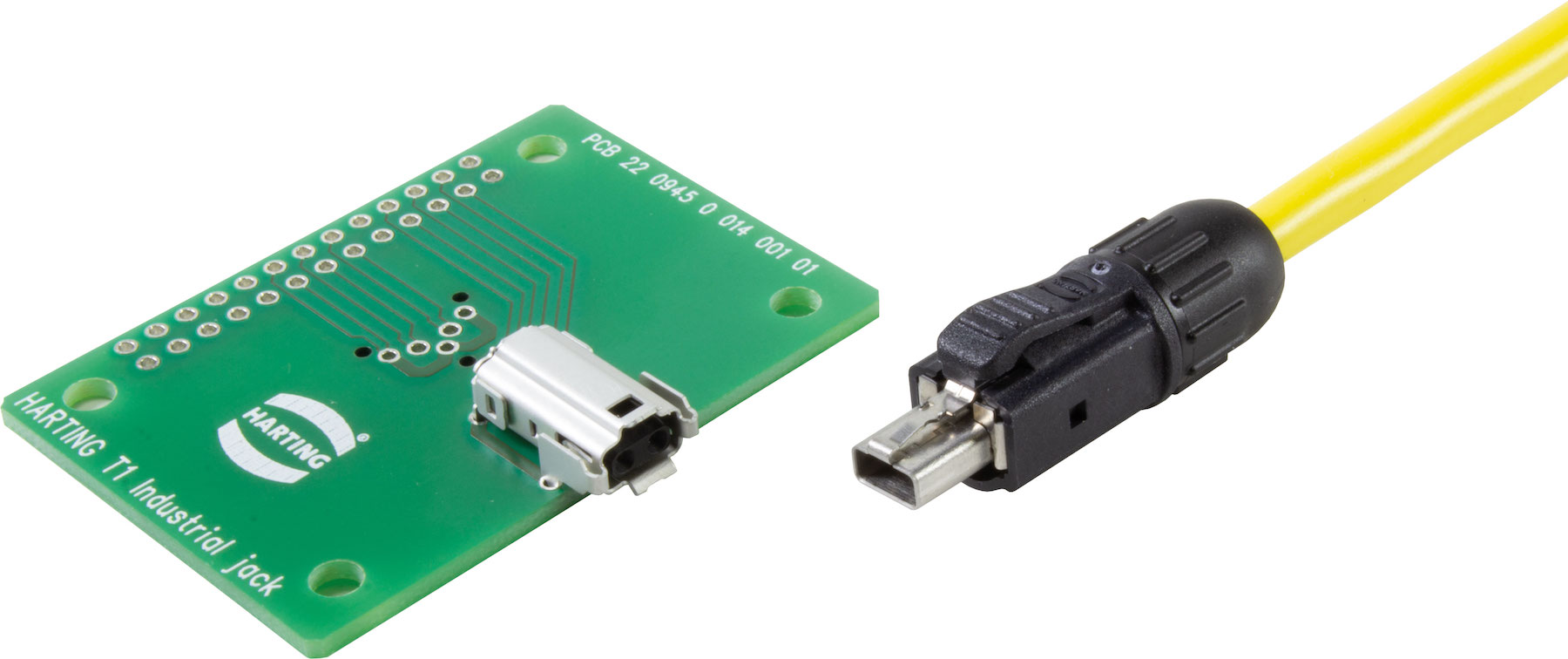
HARTING’s T1 Industrial Ethernet connector brings single-pair Ethernet (SPE) technology to industrial environments, connecting sensors, devices, and machines to IIot and Industry 4.0 networks.
Digitalization technologies can be employed efficiently in machine and plant construction, both in technical and economical terms, if production systems are modularized, scalable, and networkable.
How can an OEM design a successful digitalization plan?
Three aspects must be considered at the beginning of every new digitalization effort:
1. The functions and existing software elements of the initial system must be evaluated and prioritized. This involves recognizing the key functions that reflect the core competence of the OEM, understanding basic functions that apply across the entire system, and understanding add-on or auxiliary functions that are secondary for the OEM and the end user.
2. Next, collect the expert knowledge of end users and others relevant to possible digitalization projects and give preference to high-priority functions and software elements. Possibly compare with the know-how of competitors. Develop a list of goals and requirements. This list must be as specific as possible in terms of prioritized functions and software elements.
3. Finally, it is necessary to assess the feasibility of digitalization for individual functional modules. In this step, it is advisable to involve all in-house OEM experts along the performance and service provision chain: development and design, project planning and sales, production and assembly, documentation, service, and after-sales services. Assessments can also be obtained from external specialists, and any specifications or standards that have already been drawn up can serve as a template.
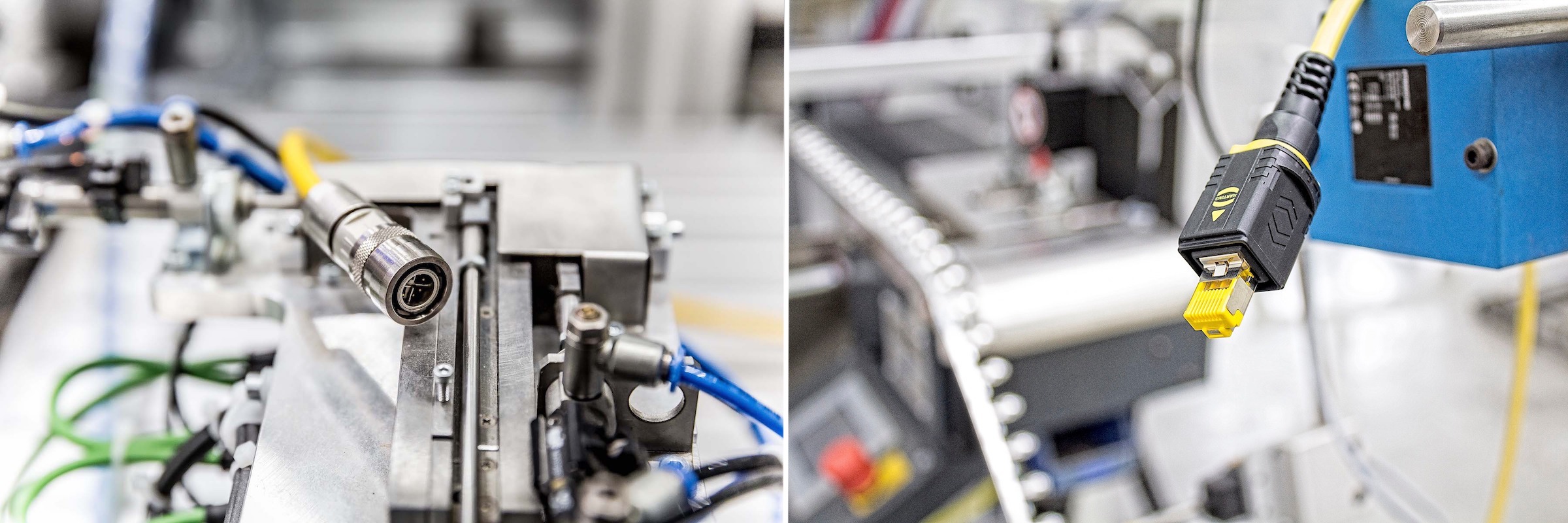
HARTING’s M12 X-coded cable assemblies and push-pull RJ45 data connectors support high-speed, high-performance data interfaces in engineering operations.
The biggest challenges for OEMs working through these steps are the contradictions between the diverse individual requirements placed upon the machines by customers and the economic necessity to restrict the number of required modules or processes. OEMs can break down their systems into logical units and pursue modularization in order to implement economical digitalization systems.
As much existing technological and machine-related data as possible should be aggregated at the lowest modular level for future digitalization projects. Particular attention should be paid to any unused or underused intelligence collected by automation components such as drives or sensors for machine or process states. This data can be captured by connected systems to create new efficiencies and capabilities.
If target goals are too broad or unduly high expectations are in place, implementation of new connected technologies could result in frustration. Projects that are both overloaded with OEM management expectations and insufficiently equipped with resources will face challenges. As such, it is advisable to define sub-projects in terms of modules and focus on high-priority key functions.
The design of the interfaces on the physical level as well as on the data level should always correspond to the latest hardware components and standards and should be flexible enough to integrate future software updates, hardware advancements, and equipment extensions. If the modularity of digitalization projects (the software) follows the modularity of machines and systems (the hardware) and features the latest physical and data interfaces, OEMs will be able to develop an economically and technically optimal system.
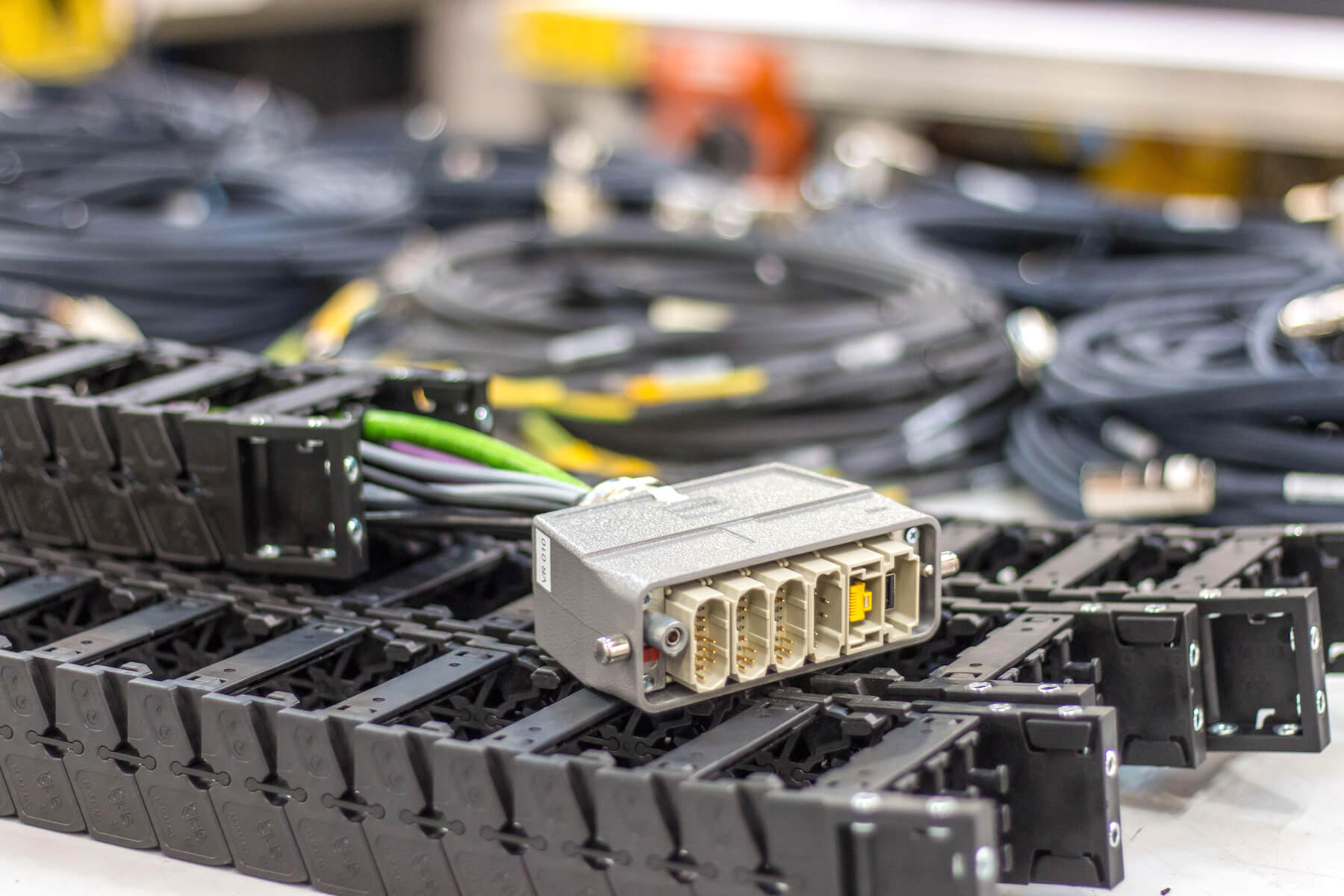
HARTING’s Han-Modular connector series can be optimally configured as needed, combining signal, power, data, and even compressed air in a modular connector housing to serve sophisticated and demanding industrial applications.
Interconnected hardware plays an important role in modular networked production systems. These components are the lifelines, nerve pathways, and synapses of digital systems and create the necessary infrastructure for the module and machine transitions in smart factory environments. It is important to work with an electronic components supplier that understands the unique goals and requirements of digitalization technologies in industrial settings and can help specify and design connected systems that enable companies to operate as efficiently and successfully as possible in our increasingly connected world.





